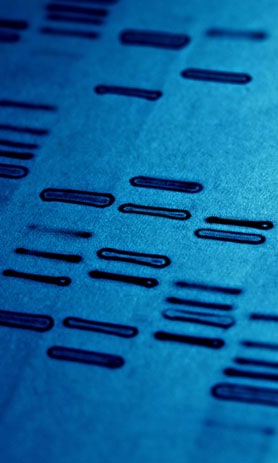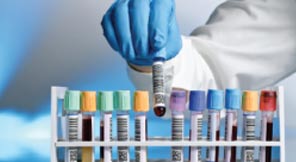DNA Biomarker Panel Improves Detection of Breast Cancer
For noninvasive screening and diagnosis

A non-invasive test for breast cancer (BC) detection measures DNA methylation using a unique panel of gene biomarkers. Designed for cancer screening and diagnosis, the test relies on an assay type known to be stable and can be performed on any bodily fluid permitting extraction and concentration of nucleic acids, including blood and urine. This patent-pending technology uses measures of aberrant DNA methylation gene patterns, which have been linked to BC. In a pilot study, the composite biomarker panel demonstrated 100 percent specificity and 97 percent sensitivity for BC detection. Because sample analysis can occur in any clinical lab setting, the test has the potential to be incorporated into national cancer screening programs.
Technology Summary
DNA methylation plays a significant role in BC development. The down-regulation of some genes is induced by the methylation mechanism of CpG islands in gene promoters. The methylation pattern of these genes is useful to screen and detect patients with BC.
How It Works
 KAUST researchers have identified a unique panel of DNA methylationbased biomarkers for BC. After reviewing publically available data from more than 1,700 literature publications, researchers identified genes they determined to be relevant for BC formation. Using computational models, they predicted a correlation between the expression and methylation levels of the genes and applied this correlation to predict methylation values in serum from available expression data from 65 samples. Based on this, they identified the panel of biomarkers. The basis for the KAUST-developed biomarker composite panel is the unique subset of hypermethylated genes. The resulting non-invasive test uses methylation patterns of 19 biomarkers for BC screening and diagnosis.
KAUST researchers have identified a unique panel of DNA methylationbased biomarkers for BC. After reviewing publically available data from more than 1,700 literature publications, researchers identified genes they determined to be relevant for BC formation. Using computational models, they predicted a correlation between the expression and methylation levels of the genes and applied this correlation to predict methylation values in serum from available expression data from 65 samples. Based on this, they identified the panel of biomarkers. The basis for the KAUST-developed biomarker composite panel is the unique subset of hypermethylated genes. The resulting non-invasive test uses methylation patterns of 19 biomarkers for BC screening and diagnosis.
Why It Is Better
Breast cancer is the most frequent cause of cancer death in women in both developing and developed regions. Mammography is the primary screening tool, but its use is limited for women in developing regions. The highly sensitive and specific test being developed at KAUST can potentially detect BC earlier, at a time when treatment can be more effective. Because the test is non-invasive, utilizes easily obtained bodily fluids, and can be analyzed in any clinical lab, its use can be incorporated into national screening programs.
IP Protection
KAUST has a patent pending for this technology.
Invention Track Code
2012-006

Benefits
- Highly sensitive and specific: Features 97 percent sensitivity and 100 percent specificity for breast cancer detection, potentially at early stage, using 19 biomarkers.
- Non-invasive: Utilizes easily obtained body fluids (including blood and urine), eliminating the need for complex procedures and reducing the risk for potential adverse effects to patients.
- Easy to use: Works with multiple assay platforms.
- Cost effective: Operates without expensive reagents, equipment, or specially trained technicians.
- Accessible: Enables incorporation into national cancer screening programs.

Applications
- Central laboratory testing.
- Point-of-care diagnostics.
- Complementary diagnostics for pharmaceuticals.
- Personalized medicine.
- Pharmaceutical screening research.
